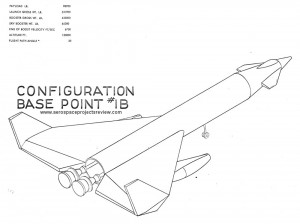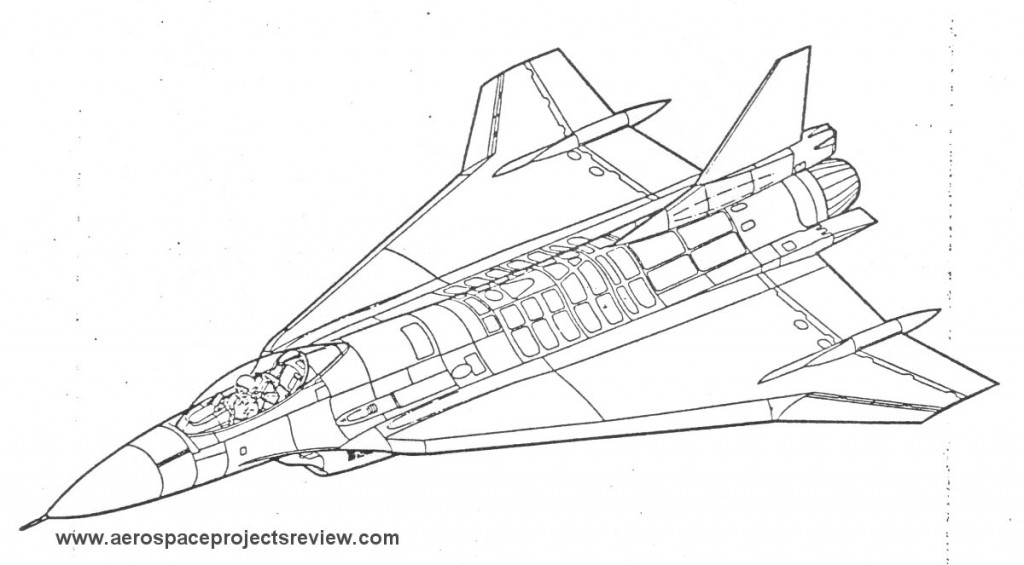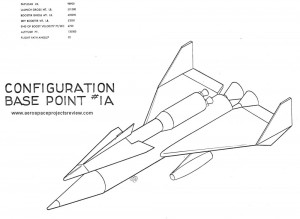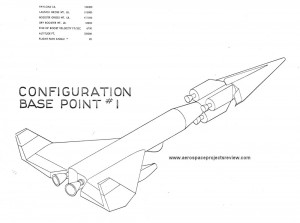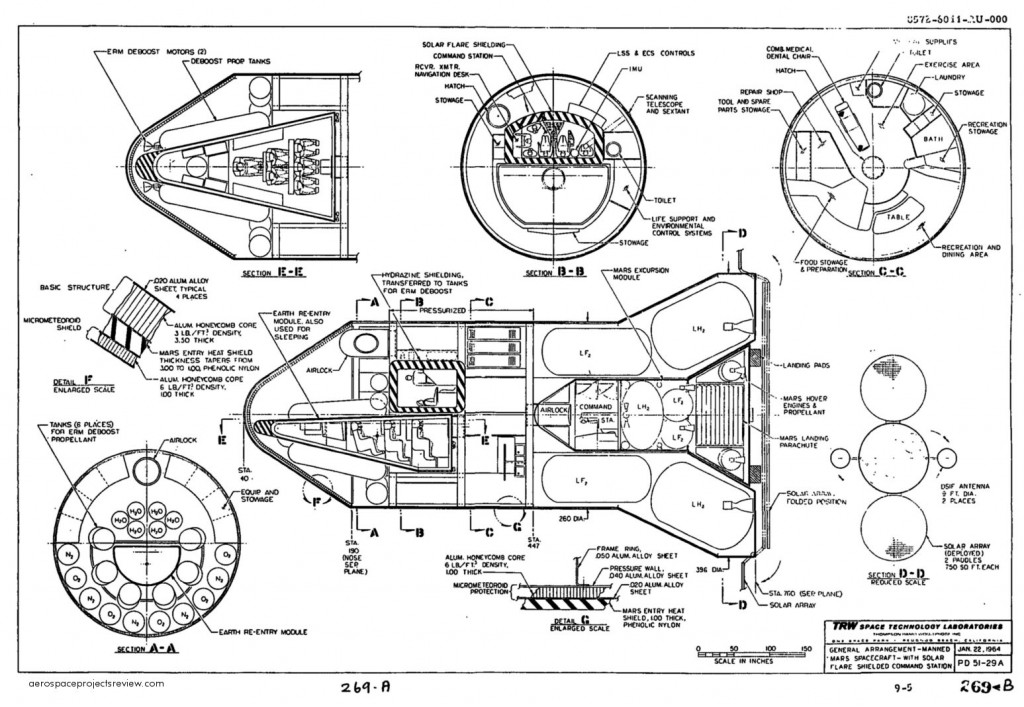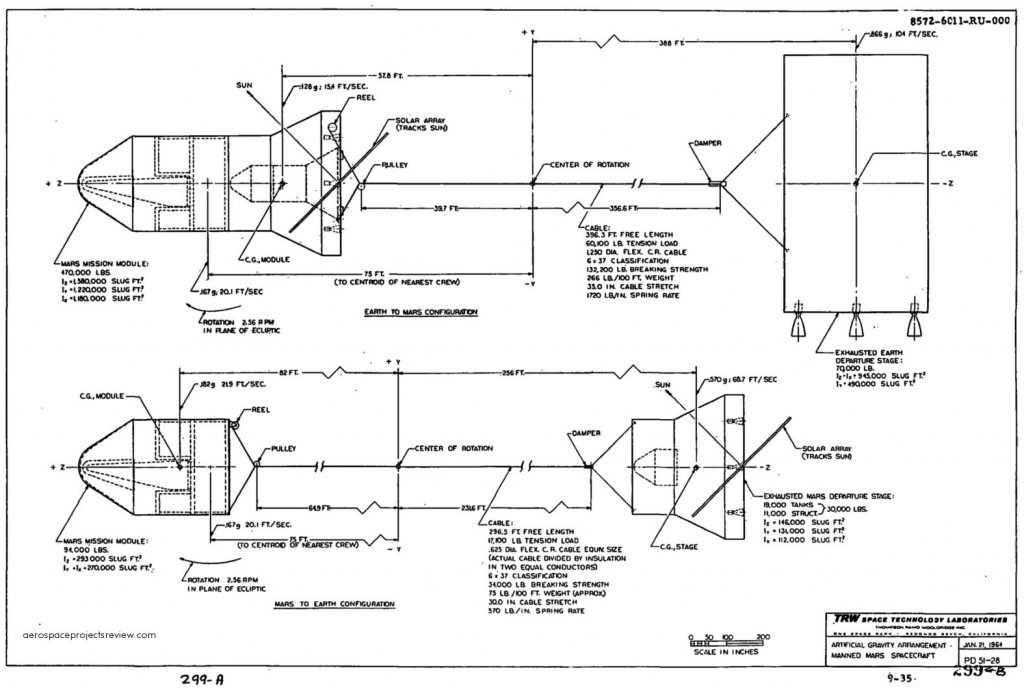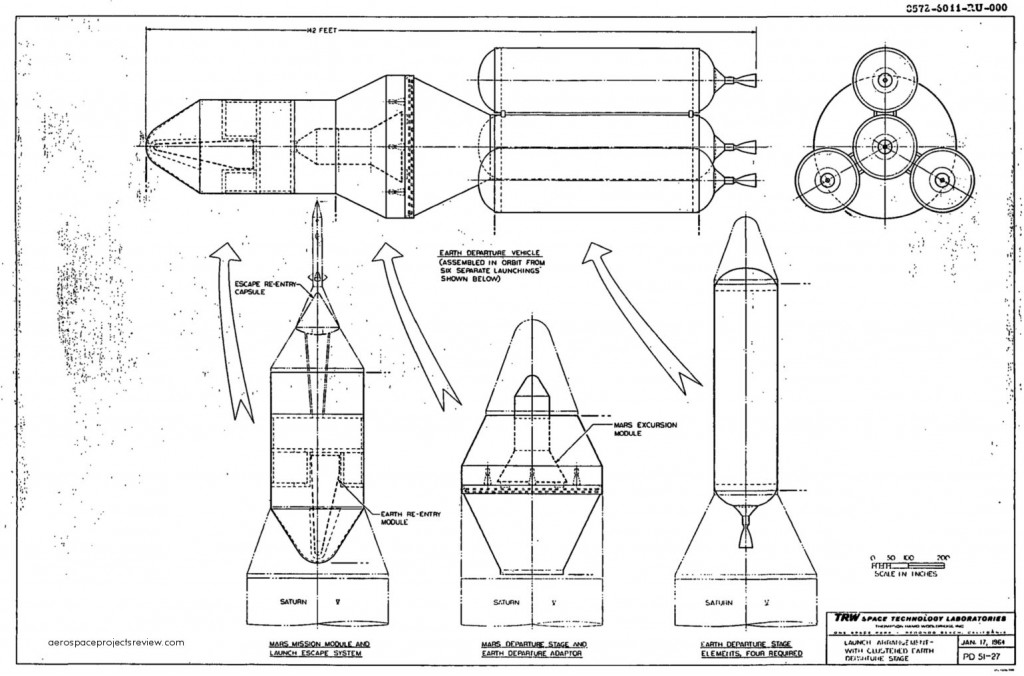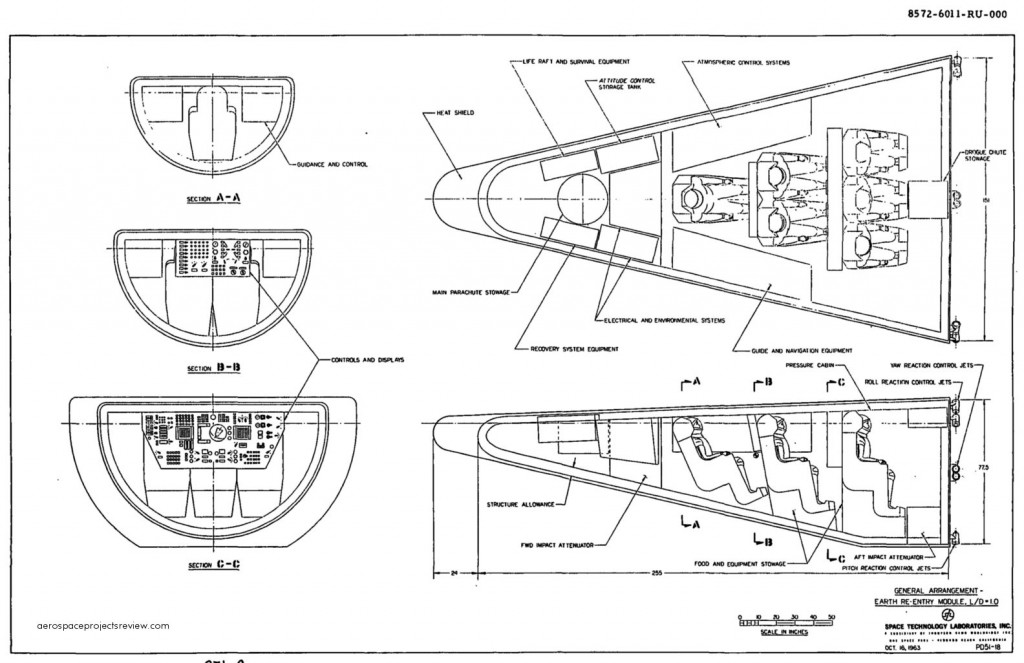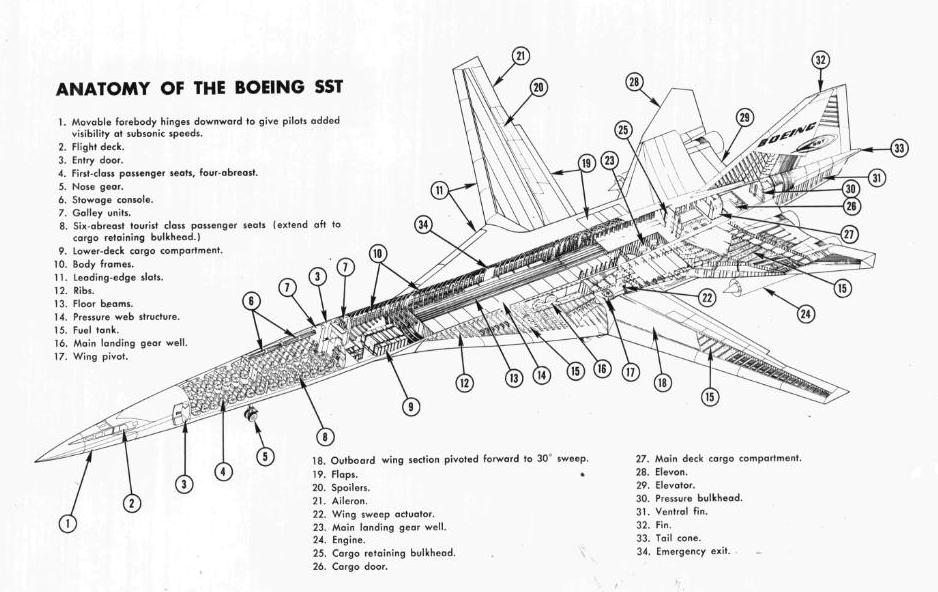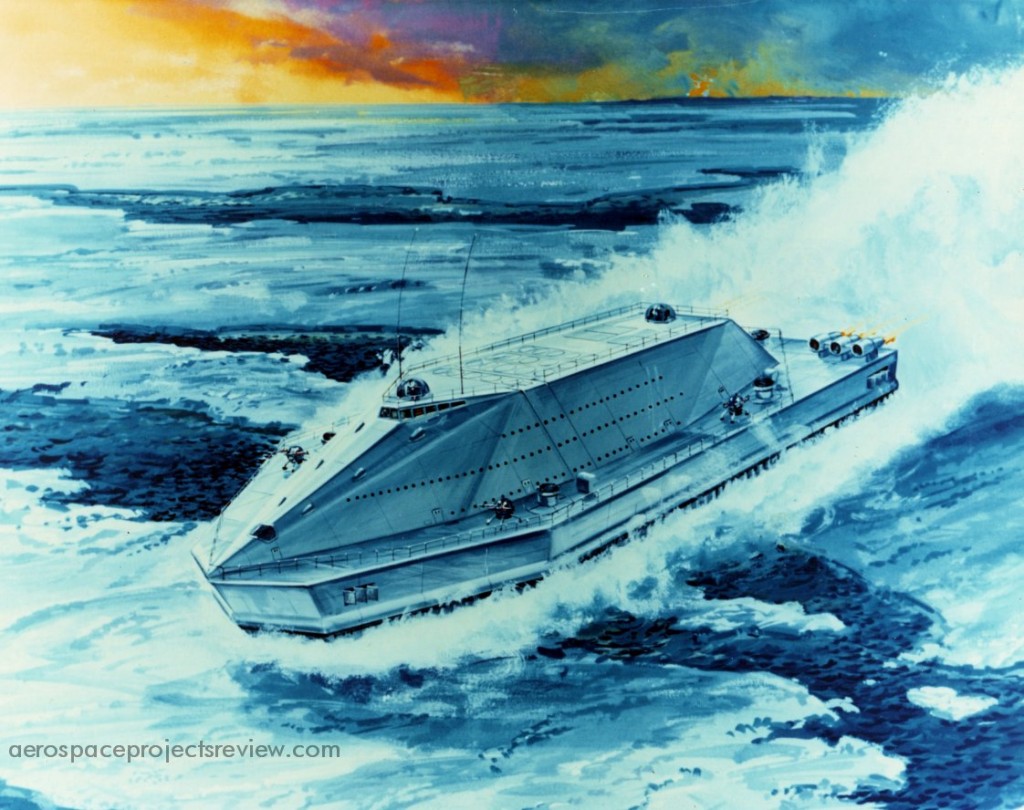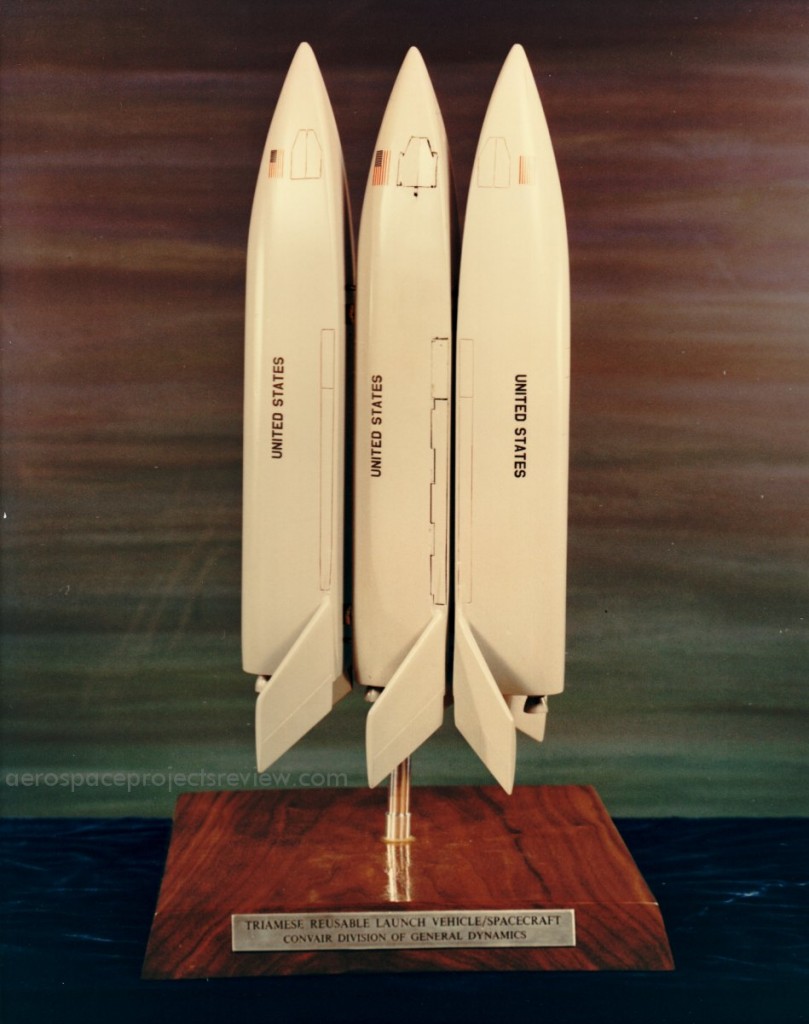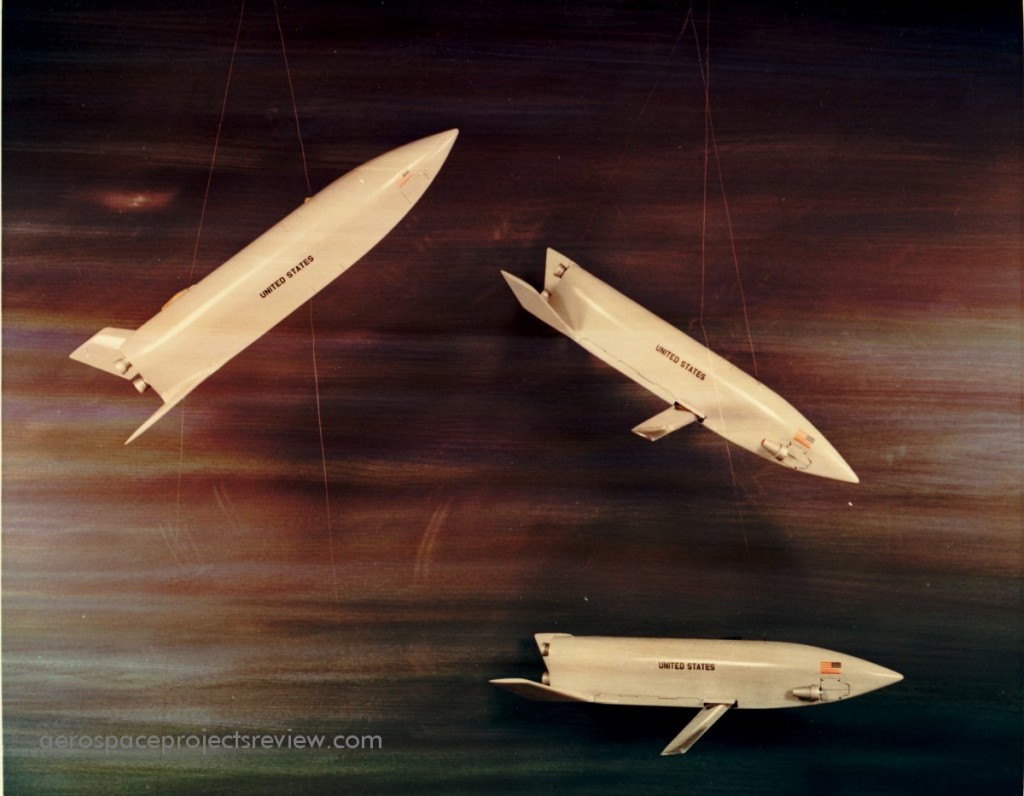Tony Chong has an article up on his blog describing the Northrop N-205 design, a T-38 massively altered into an all-rocket powered vehicle designed to launch itself to the edge of space.
The design for what became the F-16XL began in 1977 as the Supersonic Cruise and Maneuver Prototype at General Dynamics-Fort Worth. The idea was to incorporate lessons learned in SST design into military aircraft. The SCAMP was to be a highly modified F-16 with a 56-inch fuselage stretch, an all-new cranked-delta wing, and an all-new vertical tail, along with many smaller changes. The use of computers – already new with the baseline F-16 – would allow the aircraft to be flown… otherwise unlikely, due to the relaxed static stability of the design (i.e. left to it’s own the design would oscillate in attitude and angle of attack until it went truly unstable). The SCAMP would be capable of carrying a much greater payload than the F-16, such as a sizable bombload.
The F-16XL as actually built used an F-16 vertical tail. But this earlier SCAMP design, from a February 1980 report, used a new all-moving vertical tail. Even earlier designs used all-moving wingtips, which were themselves the horizontal stabilizers from a regular F-16. While that idea undoubtedly had merit, it would not allow for missiles to be carried on the wingtips, and thus fixed wingtips were designed in.
A 1963-1964 design from TRW for a manned Mars exploration craft. It, like the NAA biconic design, used aerobraking at Mars. In TRW’s case, they used the same basic aerodynamic configuration that was used on early RVs for American ICBM launched nuclear warheads.
This design could also feature artificial gravity by way of tumbling, using a single 400-foot cable connected to the upper stage used to launch the craft towards Mars. For the trip home, the Mars ship itself would split apart (like the NAA design) and tumble.
The complete spacecraft would require six Saturn V flights to orbit the components which would be assembled in Earth orbit.
And after all that, all that would return to Earth are the six crew and a very small Earth re-entry vehicle. The Mars spacecraft itself would shoot on by Earth without attempting to slow down; the ERV would enter the atmosphere directly from interplanetary space.
A 1966 North American Aviation preliminary design for a biconic aeroshell-protected spacecraft for Mars exploration. Instead of using rockets (and consequently a whole lot of rocket fuel) for deceleration into Mars orbit, this design would use aerodynamic braking in the Martian atmosphere. In effect, it would drop out of interplanetary space into the upper Martian atmosphere and skip off; in the process of doing so it would have lost enough velocity to be captured into Mars orbit with minimal expenditure of propellant.
This design had an overall length of 31.0 meters and a base diameter of 17.7 meters, and a gross weight of 353,360 kilograms. The baseline mission duration was 500 days. In order to keep the astronauts bones from turning into paper and their muscles into mush, artificial gravity was designed in. The vehicle would split apart along the separation plane, with the two sections connected by a set of cables. The entire assembly would tumble end over end, creating a sufficiency of artificial gravity for crew health. Prior to Mars interface the two sections would be winched back together.
From an ebay auction, a 1966 Boeing cutaway drawing of the early swing-wing version of the 2707 SST. While the wing would have made low speed flight, in particular takeoffs and landings, more efficient and comfortable, the technology of the time would have made the wing pivot and associated systems simply too heavy and complex for a commercial system such as this. Thus the final 2707-300 SST did away with the variable geometry wing.
But damn if it wasn’t sexy.
Photo of display models (from this auction)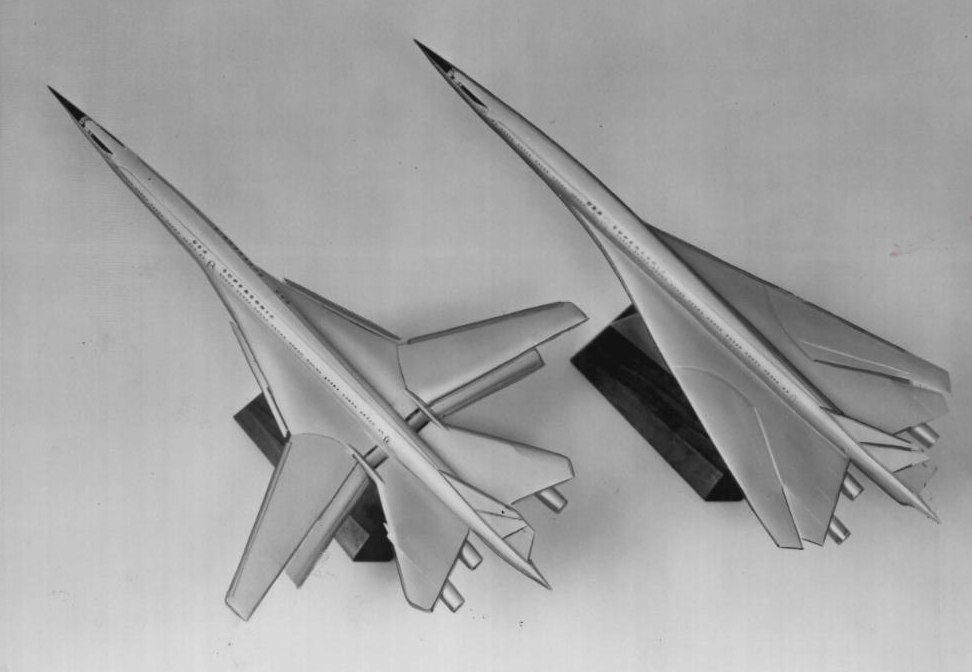
Found in a pile of ebay-obtained glossies – all the ones that could be identified were Boeing – was this one showing an armed and rather large hovercraft plowing over polar seas. No other data… date, identification, etc. all missing, just the image. What’s shown is a hovercraft propelled by six turbofan engines, with a very “Sea Shadow” type of semi-stealthy build, with a bunch of vertical launch tubes and what look rather like US Colonial Marine Corps sentry-guns scattered about the deck. The other artwork in the pile seemed to be from the 1970’s, so it’s a safe bet this design dates from then as well.
From slides at the NASA HQ archive, two photos of a Convair “Triamese” space shuttle concept. See HERE for more on the Triamese.
